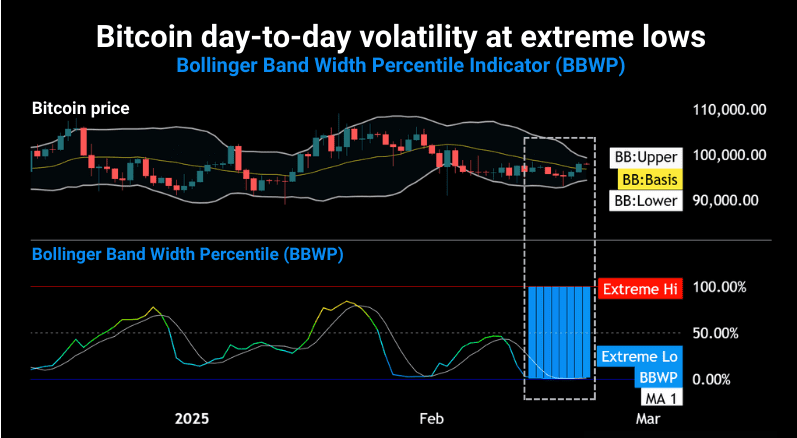Cryptocurrency, with its promise of high returns, can be tempting for beginners. Stories of Bitcoin millionaires fuel dreams of quick wealth, but should you invest all your money in crypto? Spoiler: No. This guide explains why putting everything into crypto is risky and offers practical tips for safer investing in 2025. Written for beginners, it’s a reality check to help you make smart financial decisions.
Why Investing All Your Money in Crypto is a Bad Idea
Crypto is exciting but volatile and unpredictable. Putting all your money into it exposes you to massive risks. Here’s why it’s a mistake:
- High Volatility: Prices can drop 20–50% in days, wiping out your investment.
- No Guarantees: Unlike savings accounts, crypto has no safety net.
- Scams and Hacks: Fraud and security breaches can steal your funds.
- Lack of Diversification: Betting everything on one asset is a recipe for disaster.
Financial experts agree: Never invest more than you can afford to lose, especially in crypto.
Key Risks of Going All-In on Crypto
Before diving in, understand the dangers of putting all your money into cryptocurrency in 2025.
1. Extreme Price Volatility
Crypto prices swing wildly. A coin like Bitcoin might soar to $100,000 or crash to $40,000 in weeks, driven by news, hype, or market trends.
Example: In 2022, Bitcoin dropped over 60% in months. If you’d invested all your savings, you’d have lost most of it.
Tip: Track price trends on CoinGecko to understand volatility.

2. Scams and Fraud
Crypto is a hotspot for scams, from fake coins to phishing attacks. Beginners are prime targets for fraudsters promising quick riches.
Common Scams:
- Phishing sites stealing your wallet’s seed phrase.
- Pump-and-dump schemes crashing hyped coins.
- Fake giveaways asking you to send crypto first.
Example: In 2024, scam projects cost investors billions. Going all-in on a fake coin could mean losing everything.
Tip: Research projects on CoinDesk before investing.
3. Security Risks
Crypto has no bank to recover lost funds. Hacks, lost passwords, or stolen seed phrases can wipe out your investment.
Example: If you store all your crypto on an exchange like Binance and it’s hacked, you could lose it all.
Tip: Use a hardware wallet like Ledger for safer storage.

4. No Diversification
Investing everything in crypto—or one coin—means your financial future depends on a single asset. If it fails, you’re in trouble.
Example: If you put all your money in a single altcoin and it crashes 80%, you lose nearly everything. Diversifying across assets reduces this risk.
5. Emotional Stress
Watching your life savings swing up and down with crypto prices is stressful. It can lead to panic-selling or impulsive decisions, locking in losses.
Example: Selling Bitcoin during a 30% dip out of fear might mean missing a later recovery.
Smarter Ways to Invest in Crypto
Instead of going all-in, follow these beginner-friendly strategies to invest safely in 2025.
1. Only Invest What You Can Afford to Lose
Crypto is speculative, so treat it like a high-risk experiment. Never use money you need for essentials like rent, bills, or emergencies.
How to Do It:
- Start with $10–$50 to learn the market without stress.
- Keep an emergency fund in a savings account, not crypto.
- Avoid borrowing or using credit to buy crypto.
Example: Investing $100 in Ethereum is safer than risking $10,000 you can’t afford to lose.

2. Diversify Your Investments
Spread your money across different assets to reduce risk. Crypto should be just one part of your portfolio, alongside safer investments like stocks or bonds.
How to Do It:
- Limit crypto to 5–10% of your total investments.
- Within crypto, diversify: 60% Bitcoin, 20% Ethereum, 20% stablecoins like USDC.
- Invest in non-crypto assets via platforms like Fidelity for balance.
Example: A $10,000 portfolio might include $500 in crypto, $3,000 in stocks, $1,500 in bonds, and $5,000 in savings.
3. Use Dollar-Cost Averaging (DCA)
DCA reduces the risk of buying at a peak by spreading your investment over time.
How to Do It:
- Buy a fixed amount (e.g., $25 weekly) on Coinbase or Kraken.
- Invest regularly, regardless of price, to average out costs.
- Focus on long-term gains, not daily swings.
Example: Investing $100 monthly in Bitcoin buys more when prices are low, reducing the impact of a crash.
4. Secure Your Crypto Properly
Poor security can lead to stolen funds, especially if you’re heavily invested. Protect your crypto to avoid losses.
How to Do It:
- Use a hardware wallet like Ledger for offline storage.
- Enable two-factor authentication (2FA) on exchanges like Binance with Google Authenticator.
- Store your seed phrase offline, like on paper in a safe, never digitally.
- Transfer crypto to a personal wallet, not an exchange.
Example: In 2024, exchange hacks cost users millions. A Ledger wallet keeps your crypto safe.

5. Research Before Investing
Don’t buy coins based on hype. Research ensures you’re investing in solid projects, not scams or volatile altcoins.
How to Do It:
- Read whitepapers and verify team credentials on project websites.
- Check market data on CoinGecko or CoinMarketCap.
- Focus on established coins like Bitcoin or Ethereum.
Example: Ethereum’s smart contracts have real-world use, unlike many hyped coins that crash.
6. Avoid Emotional Decisions
FOMO or panic can lead to buying high or selling low. Stay calm to protect your investment.
How to Do It:
- Set clear goals (e.g., hold for a year or sell at a 20% gain).
- Limit price checks to weekly on CoinGecko.
- Practice with demo accounts on TradingView.
Example: Panic-selling Bitcoin during a dip might mean missing a recovery. Stick to your plan.
Alternatives to Investing All in Crypto
Instead of crypto, consider these safer ways to grow your money:
- Savings Accounts: Low risk, guaranteed returns via banks or platforms like Ally.
- Stocks: Invest in companies via Fidelity for long-term growth.
- Index Funds: Diversified stock funds with steady returns.
- Bonds: Safer than crypto, offering fixed income.
Tip: A balanced portfolio might include 5% crypto, 50% stocks, 20% bonds, and 25% savings.
How to Start Investing Safely
Want to try crypto without going all-in? Follow these steps:
- Choose a Trusted Platform: Sign up on Coinbase or Kraken for secure trading.
- Start Small: Invest $10–$50 in Bitcoin or Ethereum to learn the market.
- Use DCA: Buy small amounts regularly to reduce risk.
- Secure Your Funds: Store crypto in a wallet like Trust Wallet or Ledger.
- Stay Informed: Follow Cointelegraph for market updates.
Tip: Join Reddit’s r/cryptocurrency for beginner advice and scam warnings.
Conclusion
Investing all your money in crypto is a risky move that could lead to financial disaster. Volatility, scams, and lack of diversification make it a poor choice for beginners. Instead, invest only what you can afford, diversify, use DCA, and secure your funds. Start with a trusted platform like Coinbase, protect your crypto with a Ledger wallet, and learn from CoinDesk. With these steps, you’ll enjoy crypto’s potential while keeping your finances safe in 2025!






















